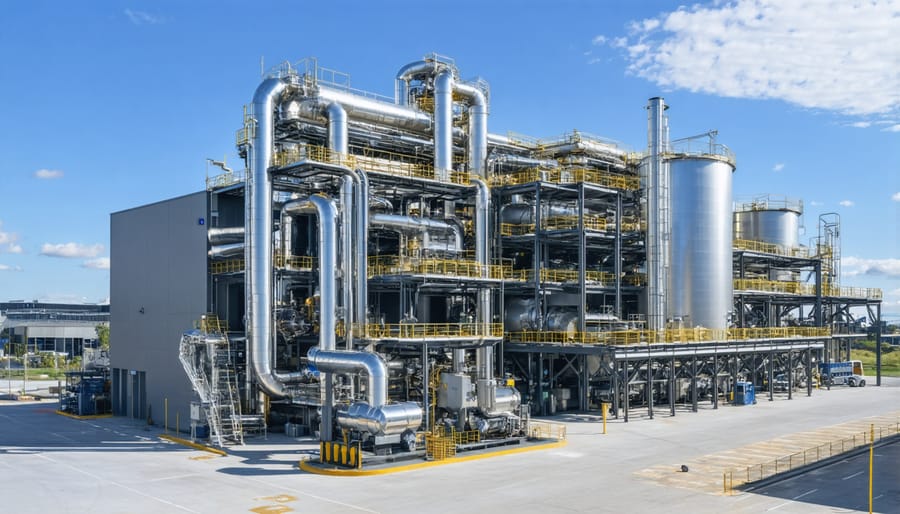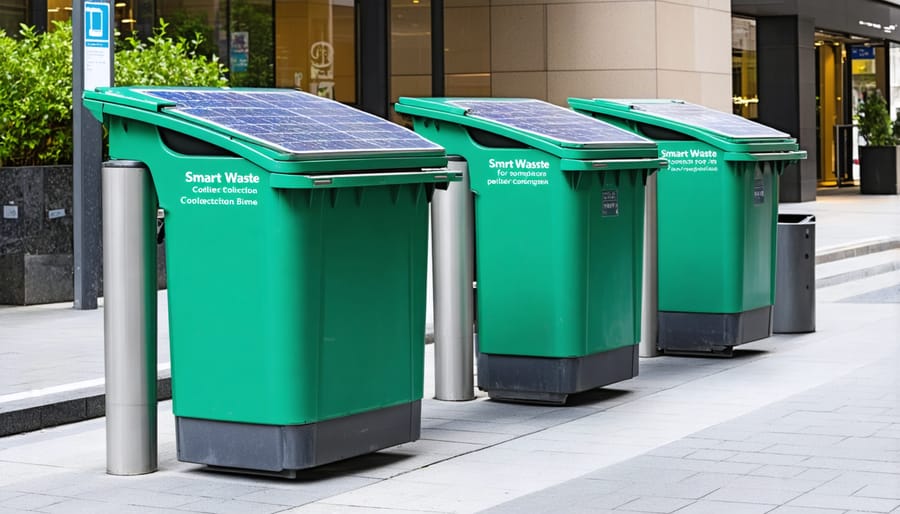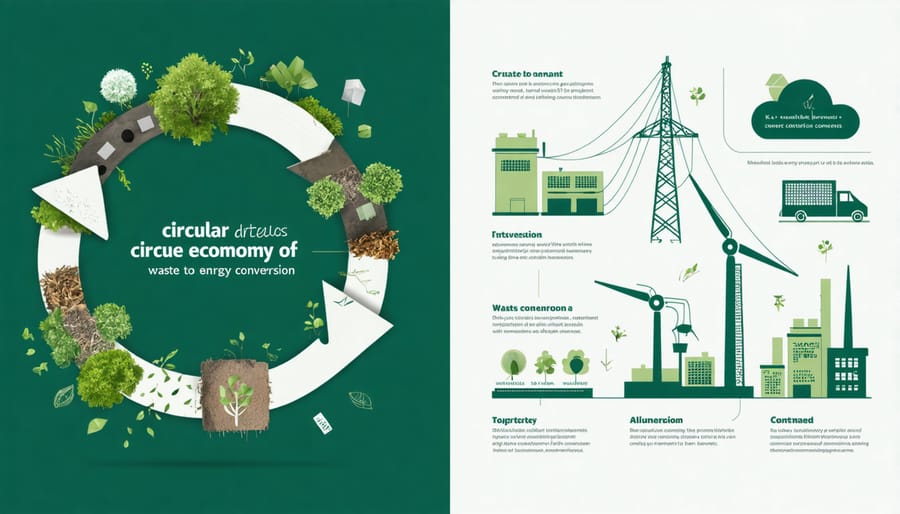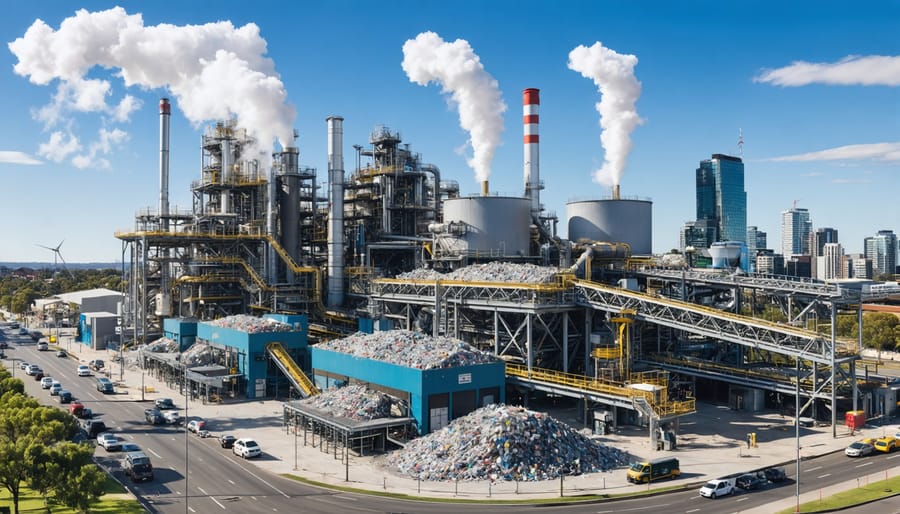In the race against climate change, Australia’s waste management revolution is redefining how smart cities transforming energy systems can power our future. Every day, Australian households generate over 12,000 tonnes of organic waste—material that could generate enough renewable energy to power 850,000 homes. Through innovative bioenergy technologies, municipalities are transforming yesterday’s rubbish into tomorrow’s renewable resource, creating a circular economy that slashes emissions while generating clean power.
This shift isn’t just environmental—it’s economic. Cities implementing renewable waste management systems are cutting landfill costs by up to 60% while creating new revenue streams from energy production. From food scraps to agricultural residues, every organic waste stream represents an untapped energy source waiting to be harnessed. As Australia pushes toward its renewable energy targets, waste-to-energy facilities are emerging as crucial players in our sustainable future, proving that one person’s trash truly can become another’s renewable treasure.
Transforming Urban Waste into Clean Energy
Modern Waste-to-Energy Technologies
Modern waste-to-energy technologies are revolutionizing how Australian cities handle waste while contributing to urban microgrids and sustainable energy production. These innovative solutions transform what was once considered rubbish into valuable renewable resources through three main conversion methods.
Anaerobic digestion leads the charge in organic waste processing, using naturally occurring bacteria to break down food scraps, agricultural waste, and sewage in oxygen-free environments. This process generates biogas, primarily composed of methane, which can power homes and vehicles while producing nutrient-rich fertilizer as a bonus.
Gasification takes solid waste management to the next level by converting various materials into synthesis gas, or syngas. Unlike traditional incineration, this process occurs in a low-oxygen environment at high temperatures, resulting in cleaner emissions and greater energy efficiency. The syngas produced can be used directly for heating or converted into electricity, making it a versatile solution for community energy needs.
Thermal treatment technologies have also evolved significantly, with advanced systems that carefully control temperature and air flow to maximize energy recovery while minimizing environmental impact. Modern facilities employ sophisticated filtering systems that capture pollutants, ensuring emissions meet Australia’s strict environmental standards.
Each of these technologies plays a crucial role in creating a circular economy, where waste becomes a valuable resource rather than a burden. Local councils across Australia are increasingly adopting these solutions, with success stories like the Earthpower facility in Sydney demonstrating how food waste can power thousands of homes while diverting organic material from landfills.

Smart Collection Systems
In Australia’s bustling cities, smart waste collection systems are revolutionising how we handle refuse, making the process more efficient and environmentally friendly. Leading the charge are sensor-equipped bins that monitor fill levels in real-time, enabling collection teams to optimise their routes and respond only when bins need emptying.
Cities like Melbourne have embraced automated underground waste collection systems, where waste travels through underground pipes to central collection points. This innovative approach reduces truck traffic, noise pollution, and carbon emissions while keeping streets cleaner and more attractive.
Smart sorting facilities employ artificial intelligence and robotics to separate different types of waste with unprecedented accuracy. These systems can identify and sort materials at speeds of up to 60 items per minute, significantly improving recycling rates and reducing contamination in waste streams.
Mobile apps are also transforming how residents participate in waste management. Many councils now offer apps that provide collection schedules, waste sorting guides, and instant notifications about service changes. Some apps even gamify proper waste disposal, rewarding residents with points or local discounts for responsible waste management practices.
In Sydney’s western suburbs, smart bins with solar-powered compactors are reducing collection frequency by up to 80%, demonstrating how technology can make waste management more sustainable and cost-effective. These systems not only improve operational efficiency but also provide valuable data for future planning and resource allocation.


Environmental and Economic Benefits
Reducing Landfill Pressure
Waste-to-energy systems are revolutionising how we manage our growing waste challenges, offering a clever solution to Australia’s mounting landfill pressures. By converting waste into valuable energy, these systems can reduce landfill volume by up to 90%, dramatically extending the lifespan of existing facilities.
In metropolitan areas like Sydney and Melbourne, where finding space for new landfills is increasingly difficult, waste-to-energy plants are proving to be game-changers. These facilities process thousands of tonnes of waste daily, significantly reducing the burden on traditional disposal sites while generating clean energy for local communities.
The benefits extend beyond just saving space. By diverting waste from landfills, these systems help minimise greenhouse gas emissions, particularly methane, which is 25 times more potent than carbon dioxide. They also recover valuable materials during the process, including metals that can be recycled, further reducing the overall waste stream.
Several councils across Australia are already seeing positive results. The Kwinana Waste to Energy facility in Western Australia, for instance, processes 400,000 tonnes of waste annually – equivalent to filling the MCG to the brim – while powering thousands of homes with renewable energy.
Job Creation and Economic Growth
The renewable waste management sector is emerging as a significant employment generator in Australia, creating diverse roles across collection, processing, and technology development. As cities integrate more sophisticated waste-to-energy systems and urban power grid transformation initiatives, the industry is experiencing remarkable growth.
Recent industry reports indicate that for every 10,000 tonnes of waste processed through renewable management systems, approximately 3-4 full-time positions are created. These roles range from technical operators and engineers to sustainability consultants and facility managers. The sector is particularly attractive for those seeking green job opportunities, offering competitive salaries and career advancement pathways.
Beyond direct employment, the industry stimulates economic growth through supply chain development, infrastructure investment, and innovation in waste processing technologies. Local councils implementing waste-to-energy projects report significant cost savings on waste management while generating additional revenue streams through energy production and recovered materials, creating a win-win situation for communities and the environment.
Success Stories: Australian Cities Leading the Way
Australian cities are leading the charge in transforming waste management into renewable energy opportunities, with several standout examples showing the way forward. In Western Sydney, the Eastern Creek facility has become a benchmark for urban waste-to-energy innovation, processing over 200,000 tonnes of waste annually while generating enough electricity to power 30,000 homes.
Melbourne’s cutting-edge SMART Centre has revolutionised organic waste processing, implementing a state-of-the-art anaerobic digestion system that converts food waste from restaurants and markets into biogas. This facility not only reduces landfill burden but also provides sustainable energy to local businesses, creating a circular economy model that other cities are eager to replicate.
Brisbane’s ResourceCo facility demonstrates how construction and demolition waste can be transformed into valuable energy resources. Their innovative process converts non-recyclable waste into processed engineered fuel (PEF), which has successfully replaced fossil fuels in local cement manufacturing, reducing carbon emissions by an estimated 150,000 tonnes annually.
Perth’s Waste to Energy plant in Kwinana showcases how public-private partnerships can drive sustainable waste management. The facility processes 400,000 tonnes of household waste yearly, generating enough electricity to power 50,000 homes while reducing landfill dependency by 25% in the metropolitan area.
These success stories aren’t just about waste management – they’re creating local jobs, reducing carbon emissions, and generating clean energy. The City of Adelaide’s zero-waste strategy incorporates smaller-scale biogas facilities at community levels, proving that renewable waste management solutions can work effectively at various scales.
What makes these Australian examples particularly noteworthy is their integration with existing urban infrastructure and their focus on community engagement. Local councils have successfully implemented education programs that ensure high-quality waste separation, maximising the efficiency of these facilities and demonstrating that public participation is crucial for success in renewable waste management initiatives.
Future Possibilities and Challenges
The future of renewable waste management holds exciting possibilities as emerging technologies continue to evolve. Advanced artificial intelligence and machine learning systems are being developed to optimize waste sorting processes, significantly improving the efficiency of waste-to-energy conversion. These smart systems can identify and separate materials with unprecedented accuracy, ensuring maximum resource recovery.
Plasma gasification technology is showing particular promise, offering a cleaner and more efficient method of converting waste into energy while producing minimal emissions. This technology could revolutionize how we handle difficult-to-process materials, including medical waste and certain plastics.
However, several challenges need addressing as we move forward. The initial investment costs for implementing new waste-to-energy facilities remain high, often requiring significant public and private sector cooperation. Additionally, ensuring consistent waste supply chains and maintaining stable energy output levels presents ongoing operational challenges.
Community acceptance and education continue to be crucial factors. While Australians are increasingly environmentally conscious, there’s still work to be done in building public understanding and support for waste-to-energy initiatives.
Despite these challenges, the outlook is promising. Research into new catalysts and processing methods suggests we could achieve even higher energy conversion rates in the future. With continued technological advancement and growing environmental awareness, renewable waste management is positioned to play a vital role in Australia’s sustainable energy future.
The journey towards sustainable waste management through renewable solutions represents a crucial step in Australia’s environmental future. By embracing innovative technologies and implementing comprehensive waste-to-energy programs, we can transform our urban waste challenges into valuable energy resources. The success stories from facilities in Western Australia and New South Wales demonstrate that renewable waste management is not just a concept, but a viable reality that delivers multiple benefits to communities.
As we’ve explored, the advantages extend far beyond waste reduction, encompassing energy security, job creation, and significant environmental improvements. The integration of these systems into our urban infrastructure presents an opportunity to create more resilient and sustainable cities while moving closer to our national renewable energy targets.
The time to act is now. Whether you’re a local council member, industry professional, or concerned citizen, your support for renewable waste management initiatives can make a difference. By advocating for these solutions in your community, supporting pilot programs, and making informed waste disposal choices, you contribute to a cleaner, more sustainable Australia. Together, we can turn our waste management challenges into opportunities for renewable energy innovation and environmental leadership.

